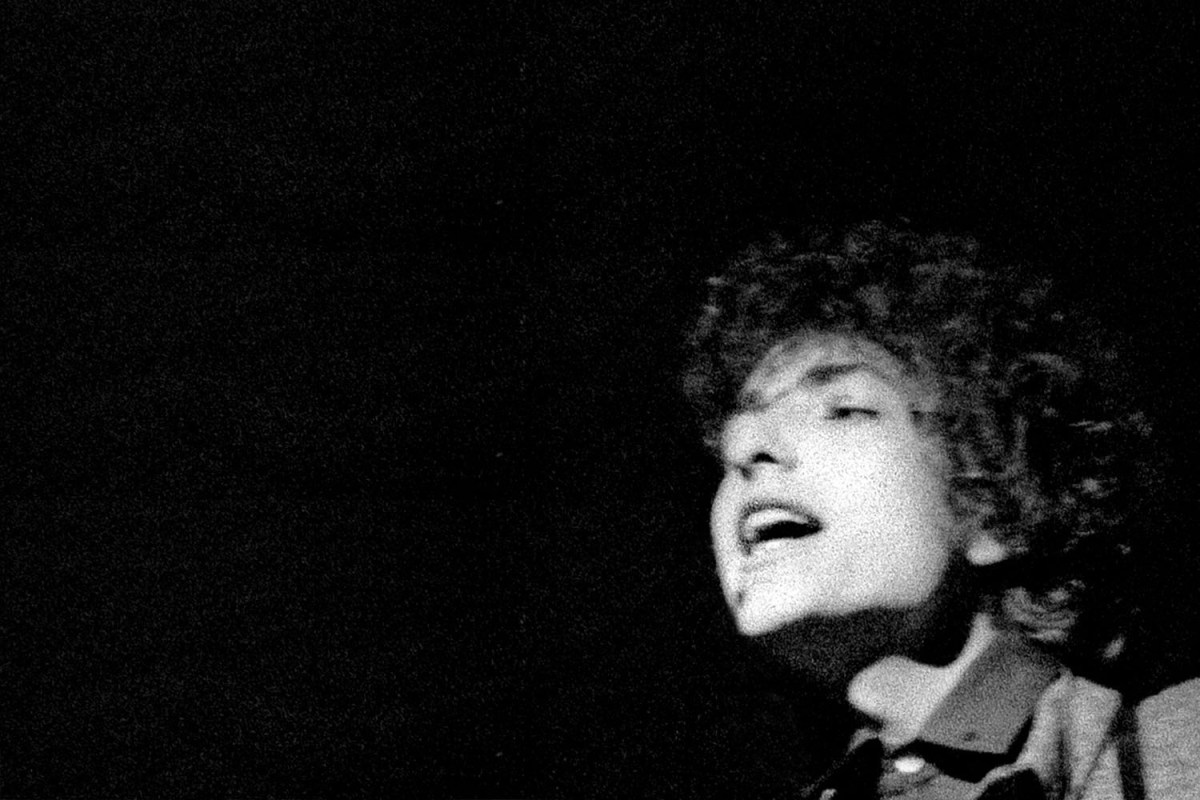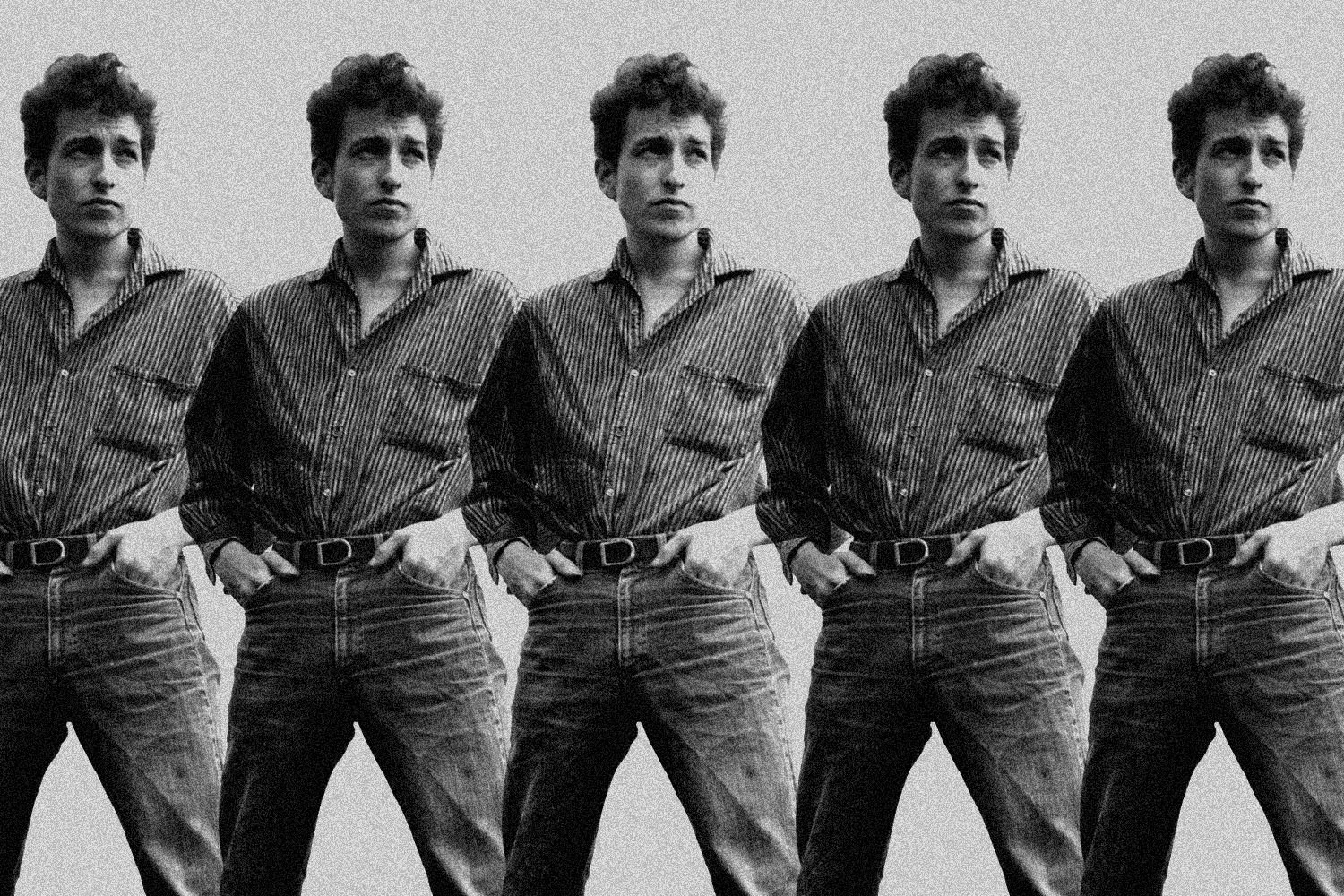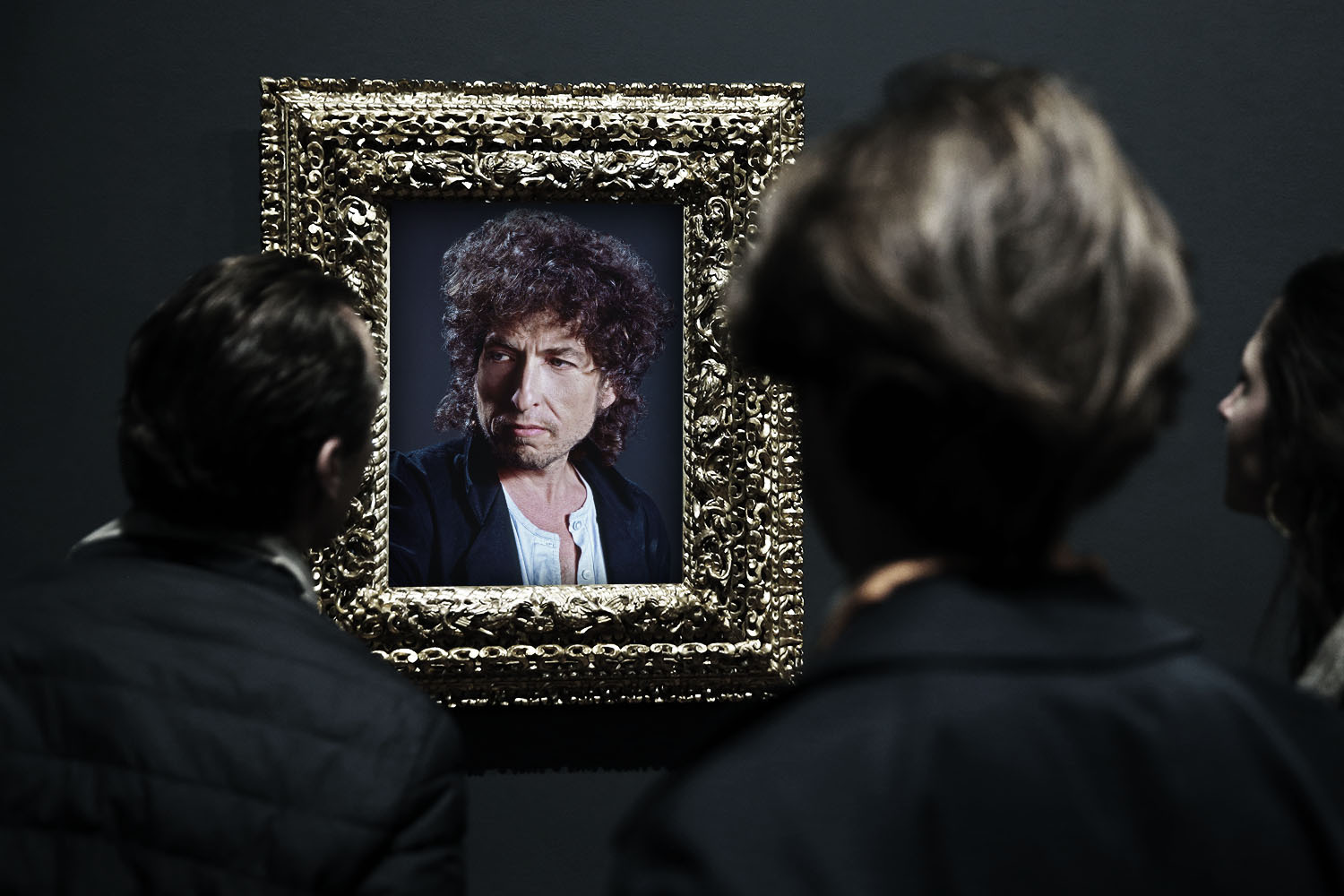When I was getting ready to write this piece, I did something that’s not uncommon for me: I listened to a lot of Bob Dylan songs. But this time, I went about it differently. I focused on the man’s voice. That might seem strange. For decades, music fans have tuned in to Frank Sinatra or Aretha Franklin or Al Green to savor the beauty of their singing, but with Dylan, the vocals have, traditionally, been the thing fans learn to live with — the flaw in the diamond of his genius. Sure, he’s a poet and a trailblazer, responsible for one of the most important music catalogues of the last 60 years, but if he’s got a weakness, it’s that his singing has never been particularly strong. Who’d want to spend their free time zeroing in on his voice?
Dylan’s supposedly poor singing has long been considered his Achilles’ heel. In a 1966 Playboy interview, the late music critic Nat Hentoff painted a picture of the songwriter’s early days in New York City, noting that while no one doubted the young man’s talent, the voice gave some pause. “Some found its flat Midwestern tones gratingly mesmeric; others agreed with a Missouri folk singer who had likened the Dylan sound to that of ‘a dog with his leg caught in barbed wire,’” Hentoff wrote, later adding, “the voice was so harsh and the songs so bitterly scornful of conformity, race prejudice and the mythology of the Cold War that most of his friends couldn’t conceive of Dylan making it big even though folk music was already on the rise.”
Of course, Dylan became a superstar, but the stigma around his singing voice has never wavered, prompting comics and others to do a now-familiar impression of his nasally, keening delivery. Everybody does the Dylan Voice. When Joni Mitchell toured with Dylan in the late 1990s, she’d do one verse of “Big Yellow Taxi” as him, mockingly letting fly with a series of drawn-out vowels and garbled lyrics. When Loudon Wainwright III recorded “Talking New Bob Dylan,” which looked at all the artists (including himself) who had been labelled the “new Bob Dylan” back in the day, he mimicked Dylan’s singing style. Dana Carvey whipped out his Dylan on Saturday Night Live. Everybody you know can do Dylan — it’s not that difficult.
But that snide, smug imitation shortchanges what is, actually, a dextrous and remarkable instrument. In fact, I’d go so far as to say that I think Dylan’s voice is rather beautiful. No one will confuse him with the far more powerful and polished singers whose voices seem to have been touched by the divine — Dylan’s is utilitarian by comparison. But over the years, he’s done a lot with not much, finding new ways to be expressive, evocative, downright gorgeous within the narrow vocal range the musical gods gave him. Other singers sound like they came straight from heaven. Bob Dylan is the master of the colloquial and the conversational — he sings the way you and I do.
When he started out, Dylan’s acoustic strum and clarion-call vocals were very much in keeping with a rising folk movement shepherded by Woody Guthrie, whose proudly unpretty voice echoed the stark truths embedded in his lyrics. Dylan emulated Guthrie, and you can hear it in the sing-speak style of his earliest material. But pretty soon, that intentionally artless delivery began to soften, locating a tenderness at the heart of “Blowin’ in the Wind” and “The Times They Are a-Changin’” that gave those protest anthems their soul. There’s a modesty emanating from that wise-beyond-his-years kid — he wasn’t yet 23 — that both underlines the boldness of his words and accentuates the vulnerability of someone so young putting an older generation on notice. Plus, he could be a lovely balladeer, adapting the traditional love song “Corrina, Corrina” or writing his own with “She Belongs to Me.” Lacking the swagger of Mick Jagger or the sweetness of John Lennon and Paul McCartney, Dylan’s unaffected plainness was startling and charming, his voice bringing out the disarming humanity in his proclamations of faith and devotion.
Unquestionably, his voice could cut like jagged glass, offering the opposite of a soothing listen. But look how well he wielded it when he was expressing pain — marvel at the sneering putdown that is “Like a Rolling Stone,” the anguished fare-thee-well of “Positively 4th Street,” or the bitter tirade that powers “Idiot Wind.” (The original version of “Idiot Wind” from 1975’s Blood on the Tracks, I mean — seek out the alternate take, found on The Bootleg Series Volumes 1–3, where the arrangement is far more mournful, and you’ll hear a very different Dylan, the sad-eyed heartbreak evident in his despondent delivery.) Sinatra, whom Dylan adores, could transform romantic woe into exquisite misery through his rich voice, but Dylan’s workingman’s style allowed no such sophisticated means of escape. Instead, he provided a bracing, unvarnished realness that anyone could relate to. His divorce album Blood on the Tracks isn’t just his finest collection — it also contains his most emotional vocal performances, a dazzling mixture of the regret, anger, denial, sadness and acceptance that were the byproduct of his marriage to Sara spintering. (A year later, he was still singing to her, closing Desire with the crushing “Sara,” where he sounds humbled and haunted, his voice weeping as pointedly as Scarlet Rivera’s backing violin.)
Another annoyance about society’s lazy Dylan imitation is that it doesn’t take into account how he’s refashioned his instrument over time. His wonderfully laid-back 1969 country album Nashville Skyline saw him affecting a romantic croon, supposedly the result of the musician laying off cigarettes. (As Dylan once put it, “I tell you, you stop smoking those cigarettes, and you’ll be able to sing like Caruso.”) He’s perhaps never produced anything as romantic as “Lay Lady Lay,” his singing full of longing and desire, although the album-closing “Tonight I’ll Be Staying Here With You” comes close, with Dylan discovering a boyish glee as he says goodbye to his loneliness after finding the love of a good woman. That era of domestic bliss with Sara — before the dissolution heard on Blood on the Tracks — saw his vocals grow more relaxed and mature. Even if the material wasn’t always his strongest — few want to defend the tossed-off 1970 effort Self-Portrait — Dylan was shapeshifting with his voice as much as he was with his musical styles, trying to understand how his singing could evolve along with the rest of him.
But even the great singers have to contend with age and the inevitable changes that occur to the larynx. His voice got more rumbly in the 1980s and early ‘90s, although his work with the Traveling Wilburys seemed to loosen him up a little, almost as if he seemed grateful to drop the baggage of being Bob Dylan™ and instead assume the carefree persona of an anonymous half-brother in that fictitious roots-rock band. But by the end of that decade, he’d latched onto an arresting new vocal identity, that of a doomed truth-teller casting a dark eye on decimated love affairs and encroaching mortality. In the 2004 edition of The New Rolling Stone Album Guide, Rob Sheffield lovingly referred to Dylan’s “sinister rusted-muffler growl” on 1997’s Grammy-winning Time Out of Mind, which the critic enthused “sounded as though he’d been sucking exhaust pipes.” Ghostly and dark, Dylan’s new voice was a revelation, like the poisoned declarations of a cursed man about to walk off into a bleak, uncertain future. On tracks like “Can’t Wait” and “Love Sick,” he hisses and insinuates, playing a prophet of world-weary sorrow. As atmospheric as the musical arrangements are, it’s Dylan’s voice that’s the main attraction — he seduces you with his foreboding menace.
Time Out of Mind was a critical and commercial comeback, and Dylan capitalized on it, further exploring this new vocal style on the splendid Love & Theft, where he cribbed from the styles and singers of the pre-rock era to make like a modern-day Bing Crosby on “Moonlight” or lament failed relationships in wistful country-ish tunes like “Mississippi” or the spectrally bereaved “Sugar Baby.” If Dylan’s voice in his younger years had never sounded particularly forceful, the older man embodied his songs through sheer presence, filling the room and commanding your attention. No longer straining, he found his comfort zone as a grizzled old pro spewing gloomy prophecy and even having a laugh or two. (“Po’ Boy” is a masterclass in corny puns and dopey zingers elevated by Dylan’s warm, easygoing delight in pretending he’s a long-lost Marx brother.)
Dylan has never stopped recording, continuing to baffle fans with holiday albums (Christmas in the Heart) and a suite of Sinatra-era tunes (three albums of covers now compiled on Triplicate). Last year came Rough and Rowdy Ways, where he hit us with “My Own Version of You,” a bluesy shuffle featuring a twisted scenario involving the narrator trying to construct an ideal lover out of discarded body parts. As he reaches 80, his voice is starting to crumble, but outside of someone like Willie Nelson, who may indeed be immortal, that’s just inevitable. Even so, his failing instrument brings extra poignancy to his bittersweet reminiscence “Murder Most Foul,” as if he’s trying to memoralize John F. Kennedy and every worthwhile piece of pop culture that’s come since before he shuffles off this mortal coil. He has so much more to say before his voice gives out completely.
Over the decades, many musicians have covered Dylan, sometimes to brilliant effect. (Even Dylan thinks “All Along the Watchtower” belongs to Jimi Hendrix now.) Often, these covers are more fetching, smoother, lit up with grace and beauty. Dylan has taken note: In his memoir Chronicles, he recalled angelic singer Aaron Neville’s version of “With God on Our Side” and “Ballad of Hollis Brown.” “It always surprises me to hear a song of mine done by an artist like this who is on such a high level,” he wrote. “Over the years, songs may get away from you, but a version like this always brings it closer again.”
Maybe, but it’s Dylan’s voice that first made those songs resonate. All the great lines he’s dreamed up over the years wouldn’t have meant as much without his impassioned performances, his earthy delivery, his weathered croak and intimate croon. For anyone who loves this man’s music, it’s foolish to discount the singing that has accompanied these indelible songs. His voice has articulated an everyman quality that’s added depth and feeling to his underdog anthems and universal explorations of love and death. We shouldn’t explain away or justify his singing as if it were some liability. It’s at the very center of his work, the heartbeat of a genius whose imperfect instrument animates the power of his words.
The Coen brothers masterpiece Inside Llewyn Davis concerns the title character (Oscar Isaac), a struggling New York folk singer in the early 1960s trying to make his name. The film is a melancholy portrait of failures and never-beens — the artists who missed their moment in the sun. As the film winds to its conclusion, Llewyn is at a folk club when the punchline to his life appears on the stage in the form of a relative newcomer who’s not named. But we and Llewyn know his fate is sealed when the young man with the wild hair and angular features goes to the mic. It’s not the song or the look of Bob Dylan in Inside Llewyn Davis that symbolizes the titanic force he’ll be in popular music. It’s the way he sings. He doesn’t sound like Llewyn Davis or anybody else. And despite all the people who have tried to imitate the Dylan Voice, no one has sounded like him since.
This article was featured in the InsideHook newsletter. Sign up now.

















![[L-R] Bill Berry, Michael Stipe, Mike Mills and Peter Buck of R.E.M. at the Aragon Ballroom in Chicago, Illinois on July 7, 1984.](https://www.insidehook.com/wp-content/uploads/2024/12/rem-book-interview.jpg?resize=750%2C750)




